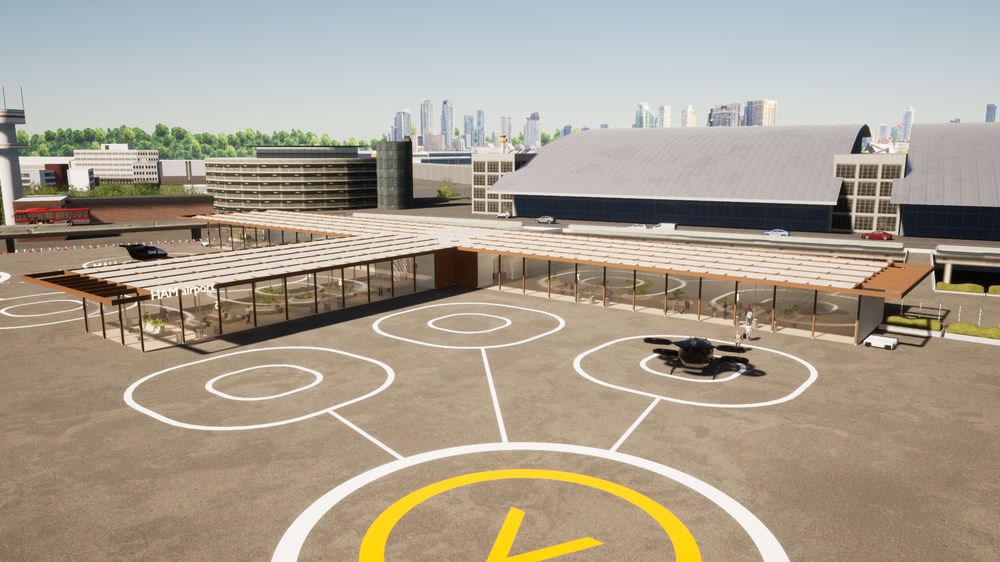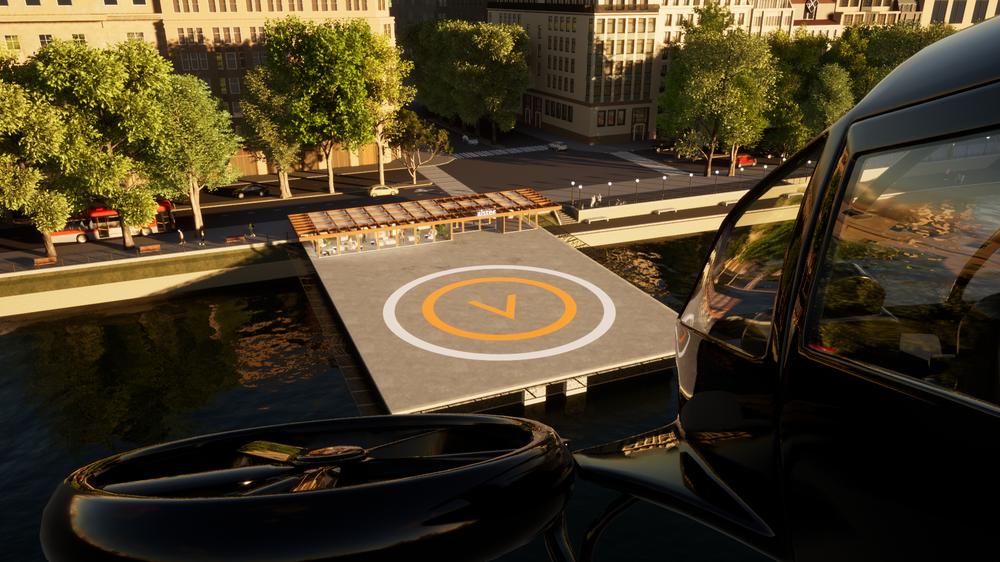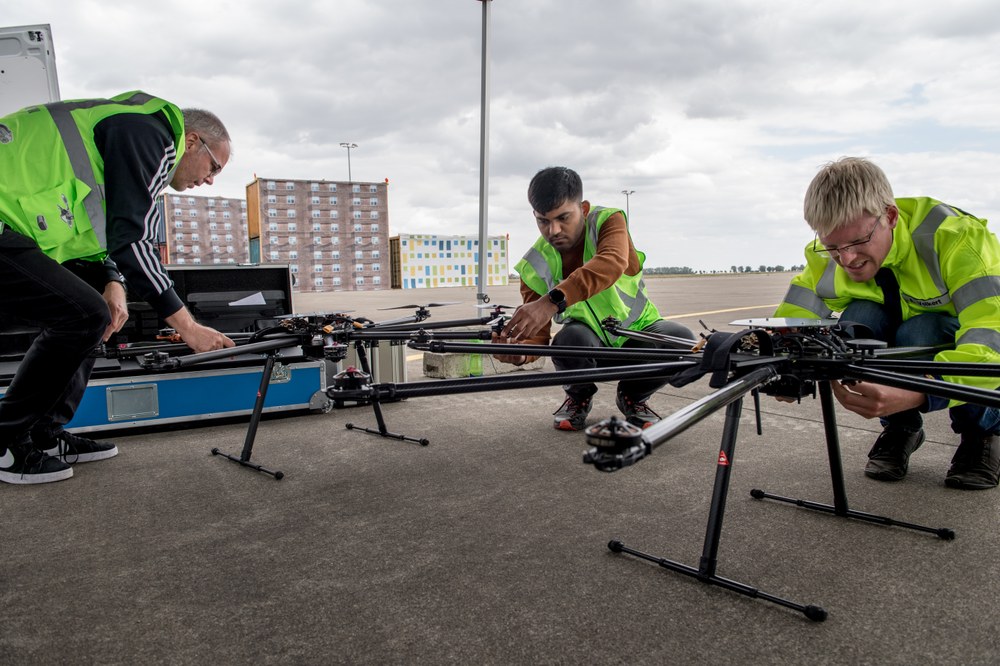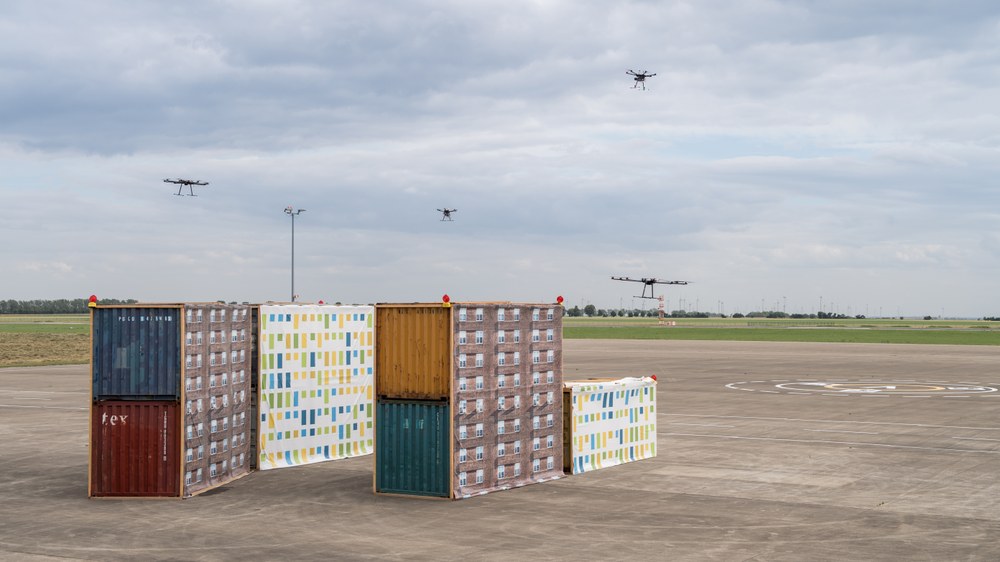Vertical take-offs on the city's skyline
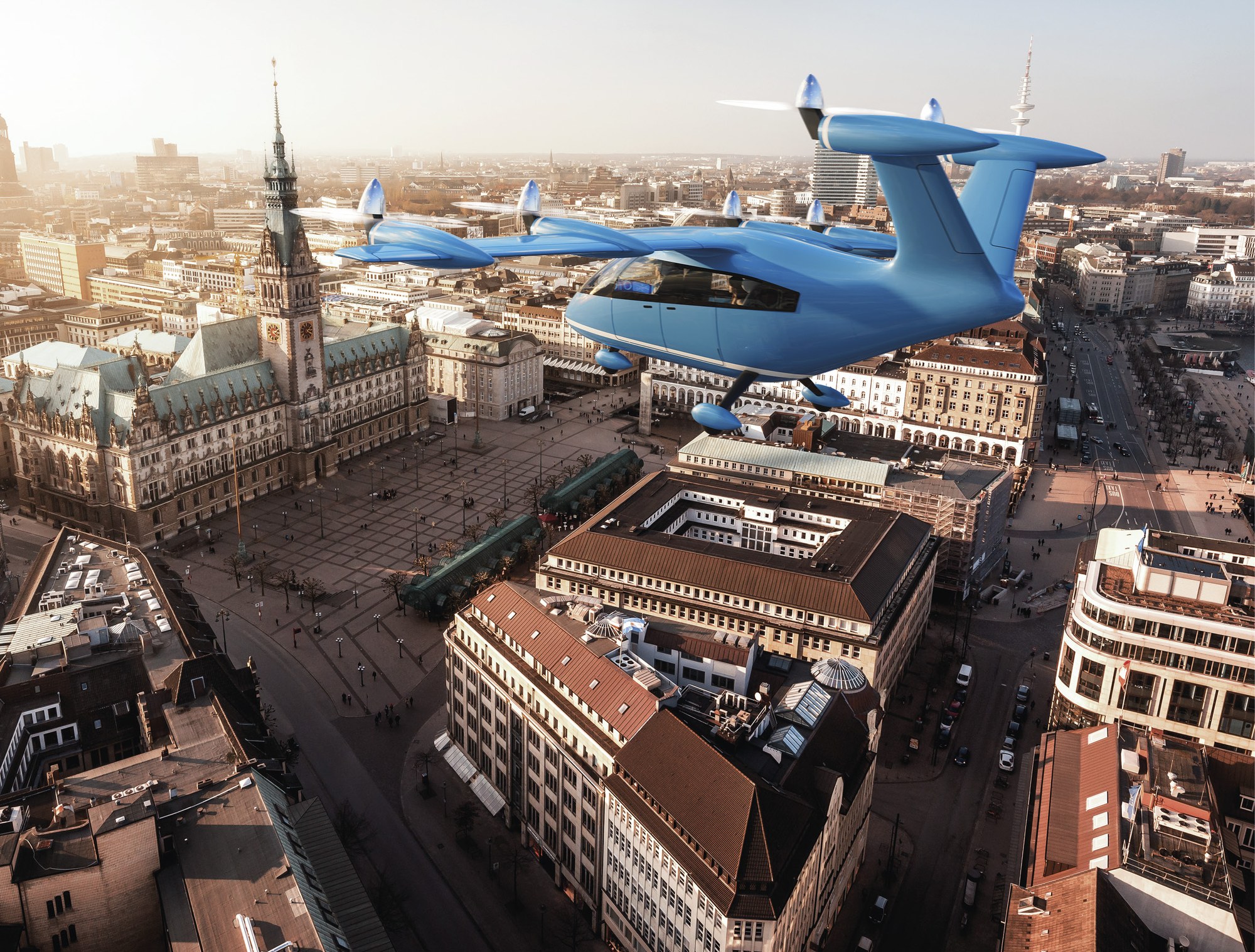

Adobe Firefly
Martina Meyer has just landed at Hamburg-Fuhlsbüttel Airport. She has to go directly to the city centre. She glances at the clock. It takes just under 40 minutes to travel the 10 kilometres to the Congress Center by metro or city train. It would take slightly longer by taxi or in a rental car, but only if she can get through easily – doubtful given the current rush hour traffic. But there is a practical alternative – an air taxi …
Admittedly, this scenario is a vision of the future, but it could well become a reality in the second half of this century. Under the leadership of the DLR Institute of Flight Guidance, 10 DLR research institutes have been investigating how such a system might be implemented. The now completed project, in which DLR collaborated with NASA and Bauhaus Luftfahrt, was named HorizonUAM (Urban Air Mobility).
Airspace integration and network management
Martina makes her way to the nearby vertidrome, from where electrically powered air taxis rise into the sky. These are about the size of a compact van and can accommodate four people. Martina checks in with three other passengers who have the same destination and takes her seat. There is no pilot on board; the flight is fully automated.
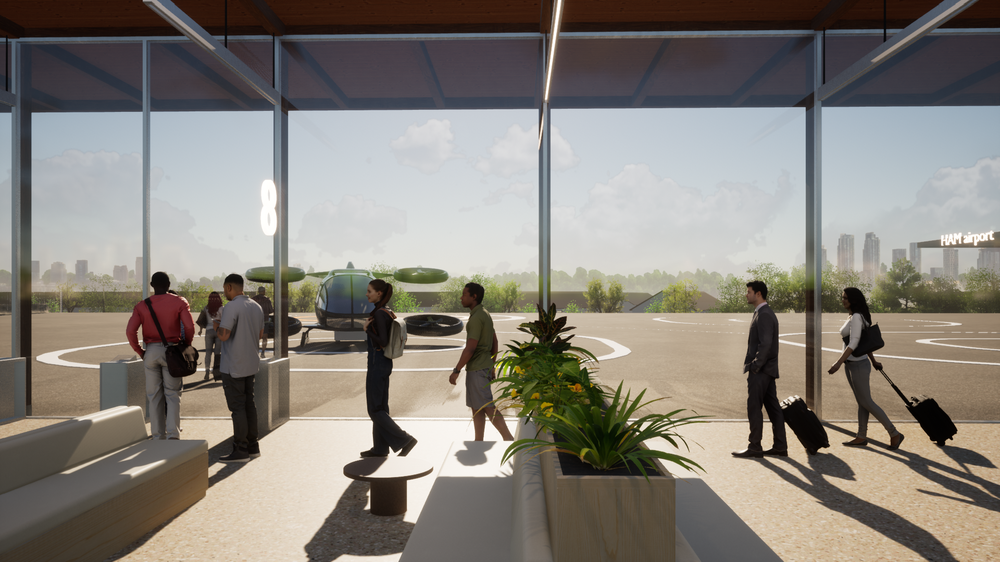
'Vertidrome' is the HorizonUAM project's term for take-off and landing areas used by air taxis. This includes both 'vertiports' and 'vertistops'. A vertiport is a set of landing pads that, in addition to charging stations, also has capacity for maintenance and repairs. Spare parts and tools are kept in stock here, and personnel ensure that the air taxis are operational. Vertistops, on the other hand, only have a landing pad and minimal infrastructure for passenger handling, weather monitoring, communications and navigation.
The researchers modelled the airside processes at the vertidrome, taking account of potential infrastructure failures, delays and changing wind conditions. Based on the simulation, they devised a concept for evaluating and comparing different take-off site designs.
The researchers carried out a real-time simulation to investigate the integration of vertidromes into the infrastructure of an existing airport. The result was that air taxi operations on existing runways would only be possible during periods of low traffic. There are two reasons for this. Firstly, the tower controllers can only supervise a limited number of additional vehicles. The DLR experts therefore recommend setting up a dedicated UAM controller workstation to address this. Secondly, there are very few free time slots on existing runways for additional departures or arrivals.
In addition to the vertidrome at the airport, a number of small vertistops are also needed, distributed across the city centre. The DLR researchers used a simulation to create a scenario for Hamburg, a city of almost two million people spread over some 775 square kilometres. They considered all key elements – particularly aircraft and passengers – to be acting independently. The evaluation came up with a total requirement of 2800 flights per day, with capacity utilisation of up to 80 percent. This can be met by 275 air taxis moving between 20 vertidromes spread across the city. However, demand is unlikely to be the same for all vertidromes, so each take-off and landing site needs a different number of parking positions for air taxis – for Hamburg, a total of approximately 400.
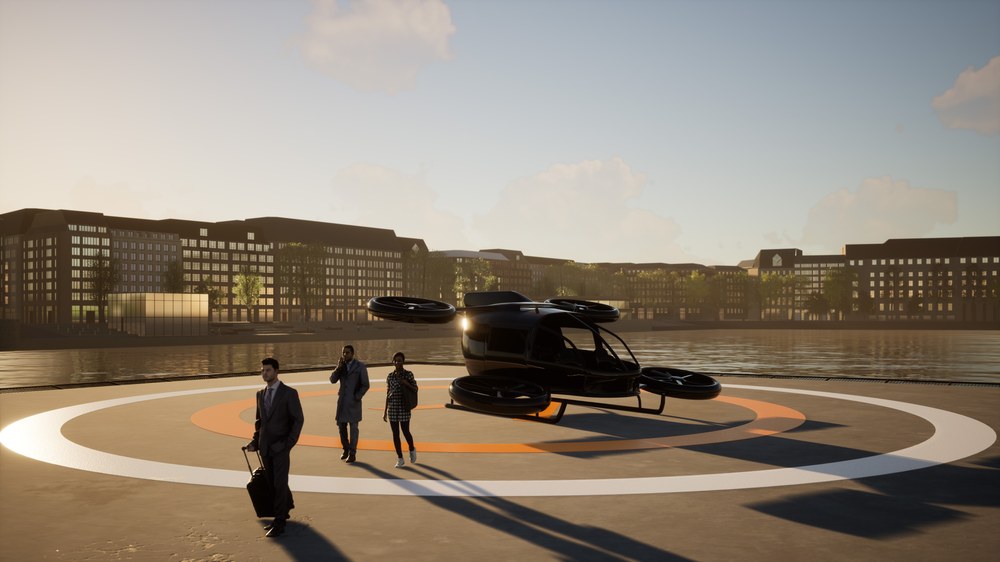
Flight times can also be optimised through good network management. In this case, the choice was between time-slot-based approaches, as is the case in conventional flight operations, or trajectory-based approaches. For the latter, the most direct flight path is automatically calculated using the parameters of latitude, longitude, altitude and time, and coordinated with the flightpaths of other aircraft in the area. The simulation showed that the flight duration tends to be longer for journeys based on time-slot allocation than those using trajectories. Regardless of the method, there is a time saving of more than 30 percent on selected routes compared to ground-based traffic, although traffic jams, tunnel closures and other hindrances for road traffic were not even considered in the simulation.
Acceptance by passengers and the general public
After taking off vertically, the air taxi soon reaches its cruising altitude of 150 metres. It heads south, travelling over undeveloped land wherever possible, along the route of a railway line. Martina's initial nervousness about this new experience quickly subsides.
At HorizonUAM, 30 people experienced a short trip by air taxi in a cabin simulator. Virtual reality headsets showed the 'passengers' realistic animations of arrival and departure manoeuvres as well as inner-city routes. The focus was on their well-being. The evaluation showed that under nominal flight conditions, the presence of a crew member on board did not significantly increase perceived safety. However, in scenarios that included an unexpected rescheduling of the flight, the participants tended to feel more comfortable when a crew member was present.
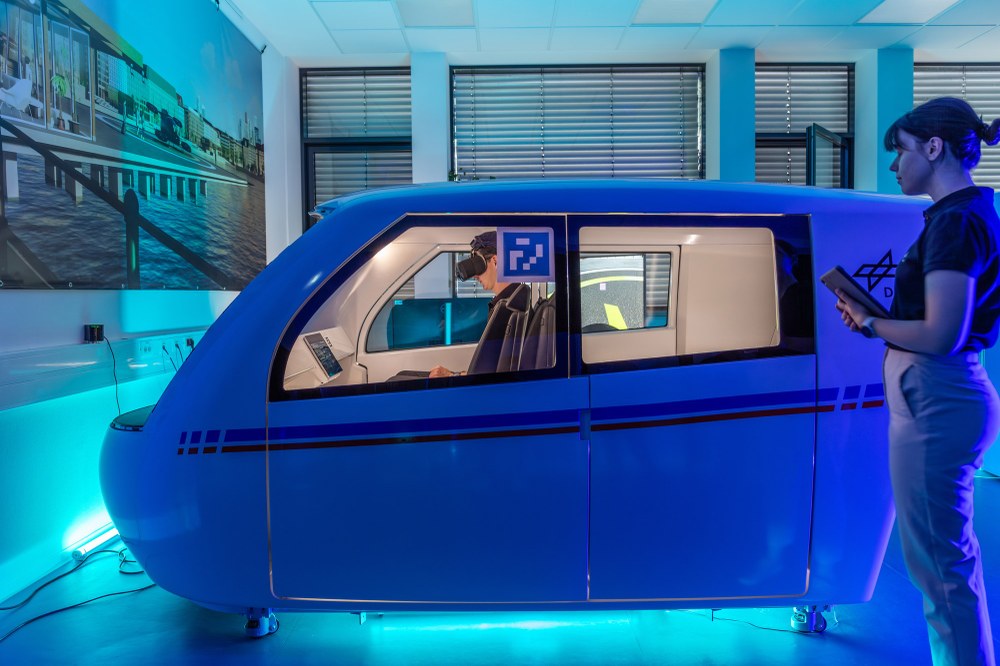
Acceptance of this new type of mobility is also very important for the population as a whole. The noise generated by air taxis can have a negative impact on quality of life. The researchers have developed and tested a smartphone app to record the noise of unmanned aerial vehicles. The app measures the level of noise generated by flying objects in decibels and can also register assessments such as the subjective level of noise pollution. The scientists also conducted a representative telephone survey on acceptance among the German population. The attitude of the respondents depended on the intended use. Civilian drones used for civil protection or in agriculture, for example, currently tend to be more widely accepted than air taxis. Those surveyed found it easiest to imagine using an air taxi to reach rural regions with poor public transport connections.
Paticipating DLR Institutes and facilities
- Institute of Flight Guidance (Coordinator)
- Institute of Propulsion Technology
- Institute of Flight Systems
- Institute of Air Transport
- Institute of Communications and Navigation
- Institute of Aerospace Medicine
- Institute of Atmospheric Physics
- Institute of System Architectures in Aeronautics
- Institute of Maintenance, Repair and Overhaul
- National Experimental Test Center for Unmanned Aircraft Systems
Safety on automated flights
The television tower is already in sight. Almost there. Meanwhile, down on federal highway 433, there has been an accident. Traffic is mounting up, apart from an emergency corridor for the rescue services. A short time later, the six spinning rotors of the air taxi switch to landing mode and the vertical descent over the Inner Alster is initiated autonomously.
In future, flights by drones and air taxis outside the control zones of airports will be coordinated via the U-space system without involvement from controllers. To ensure safe operations over densely populated areas and avoid collisions, air taxis must communicate with each other reliably and in real time. The DLR team developed an ad-hoc communications system tailored to the specific requirements of urban air traffic. An experimental platform was set up for testing and flown to by two hexacopters in a practical test. Collision avoidance and secure transmission of ground-based navigation data were successfully demonstrated.
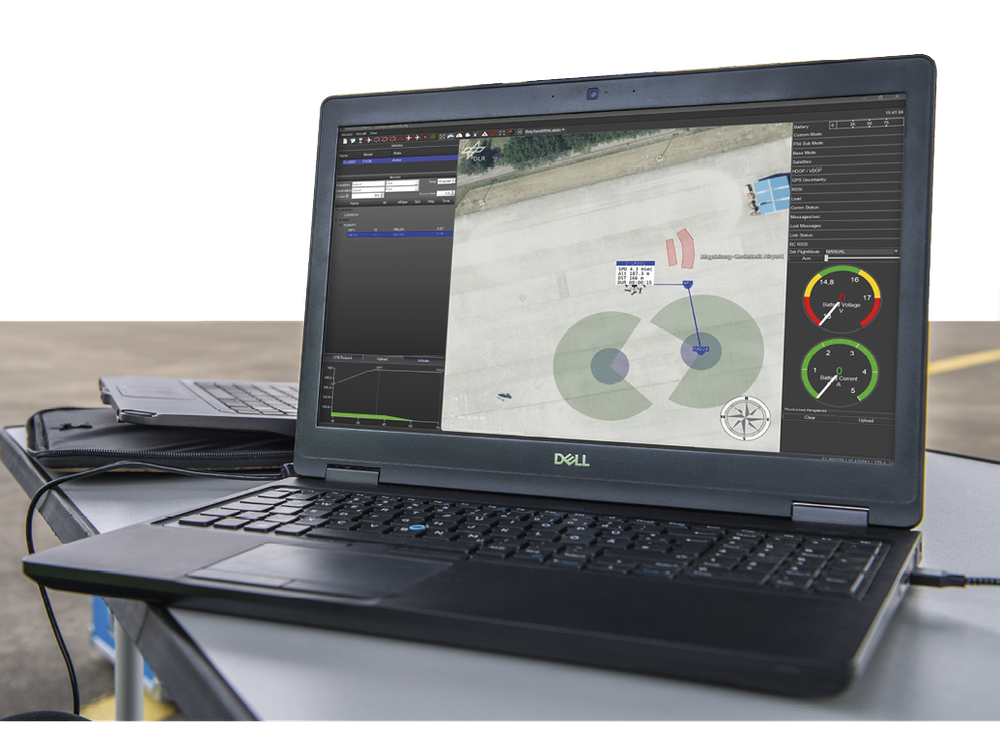
The air taxis travelled autonomously in the simulation. In reality, the first air taxis will still be controlled by pilots. Autonomous functions will be able to increasingly take over more of their tasks in the longer term. An onboard autonomous function was developed and tested as part of HorizonUAM, based on artificial intelligence and machine learning. The program learned to recognise people from different heights and perspectives using thousands of training images. This is important so that an air taxi can take evasive action or delay landing in the event of danger. The researchers also developed software that monitors whether the onboard computer is making the correct decisions.
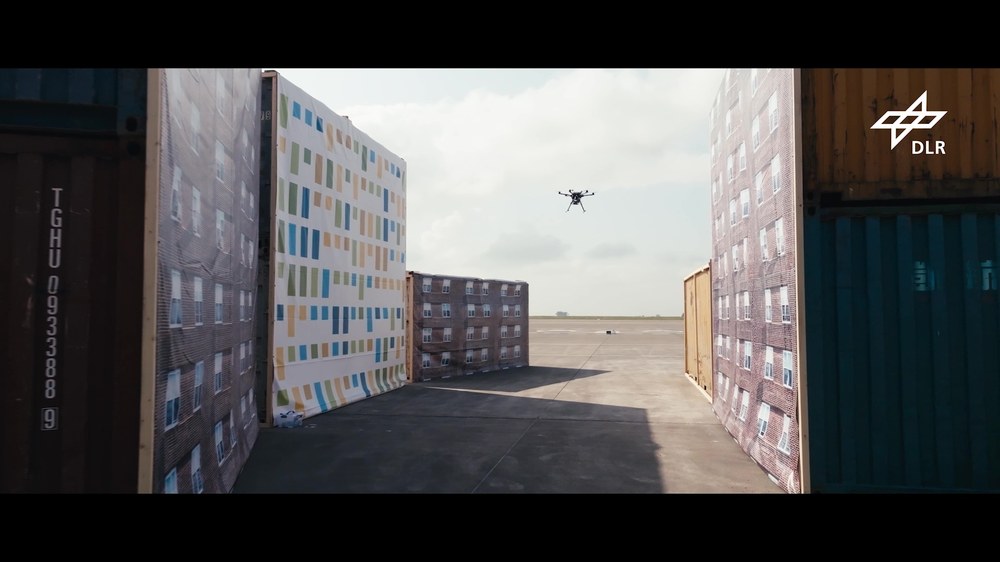
Video: DLR project HorizonUAM investigates outlook for air taxi traffic
Your consent to the storage of data ('cookies') is required for the playback of this video on Quickchannel.com. You can view and change your current data storage settings at any time under privacy.
Air taxis – what is the state of the market?
After a little over 10 minutes in the air, the air taxi touches down on the landing pad of the vertistop at the edge of the Inner Alster. After a quick refreshment, Martina continues on foot to the nearby Congress Center, arriving in good time. As far as she is concerned, the 60-euro price tag was well worth it for such a fast and environment-friendly journey. Hovering just above the harbour city was a very special experience as well.
HorizonUAM has been completed, but urban air mobility has not yet been fully researched. In particular, the cost-intensive areas of infrastructure, air traffic management and vehicle prices require further investigation. The next steps will include the construction of a vertiport demonstrator at the DLR research airport in Cochstedt. Other projects are in their preparatory phases.
From the customer's perspective, the financial cost of using an air taxi should not be too high. Yet future operators will be looking at profitability. To reconcile these two interests, the researchers calculated a price of between four and eight euros per kilometre flown. Another key finding was that short journeys and access to a vertidrome are also essential drivers of demand. There should be sufficient market potential worldwide. In addition to Hamburg, the researchers have identified approximately 200 other cities where the use of air taxis could be realistic by around 2050.
An article by Michael Müller from the DLRmagazine 174

